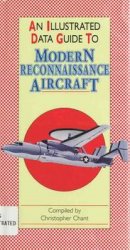This entry is not complete without reference to the rest of the Arctic world. Ultimately, all native peoples of the Americas have Asian origins, but as the foregoing discussion has documented, Alaskan cultures have a long history of direct and indirect contacts with Asia. All of Alaska’S earliest cultures with the exception of fluted points have Siberian antecedents. Asian-derived Mesolithic microblade traditions dominated Alaska’s mid-Holocene cultures, and Alaska’s cultural development after 4000 BP exhibits many instances of Asian contacts, influences, and population movements. Unlike other areas of the Americas, its Arctic peoples and cultures have participated in circumpolar Eurasian Arctic and Far East cultural history for thousands of years, and owe more to these influences than to other Native North American cultures.
Arctic peoples in Eurasia as well as in the Americas have been dynamic and highly resourceful. They developed new technologies, pioneered new territories, and found ways to broaden or intensify their resource base by adding specialized strategies for exploiting climatically harsh but ecologically productive Arctic seas. Proceeding from terrestrial hunters to generalized coastal foragers, to hunters of seals, sea lions, walrus, and eventually highly specialized hunters of large whales - and in Eurasia, herders of domesticated reindeer - Arctic peoples not only learned to support larger, more permanent communities, but they also expanded contacts with neighbors and other cultures, and in Alaska, Chukotka, and Scandinavia developed complex social and political systems, engaged in regional warfare, and interacted with their southern neighbors. Even though the Eastern Arctic had harsher climate and fewer resources and opportunities, its cultures survived for 4500 years, produced world-class art, and successfully engaged Europeans for 1000 years, and it is they through their contacts with Martin Frobisher and later explorers and scientists who gave us the concept, ‘Eskimo’.
See also: Americas, North: Sub-arctic; Animal Domestication; Craft Specialization; Cultural Ecology; Interpretive Art and Archaeology; Maritime Archaeology; New World, Peopling of; Ritual, Religion, and Ideology; Seasonality of Site Occupation; Ships and Seafaring.




 World History
World History









